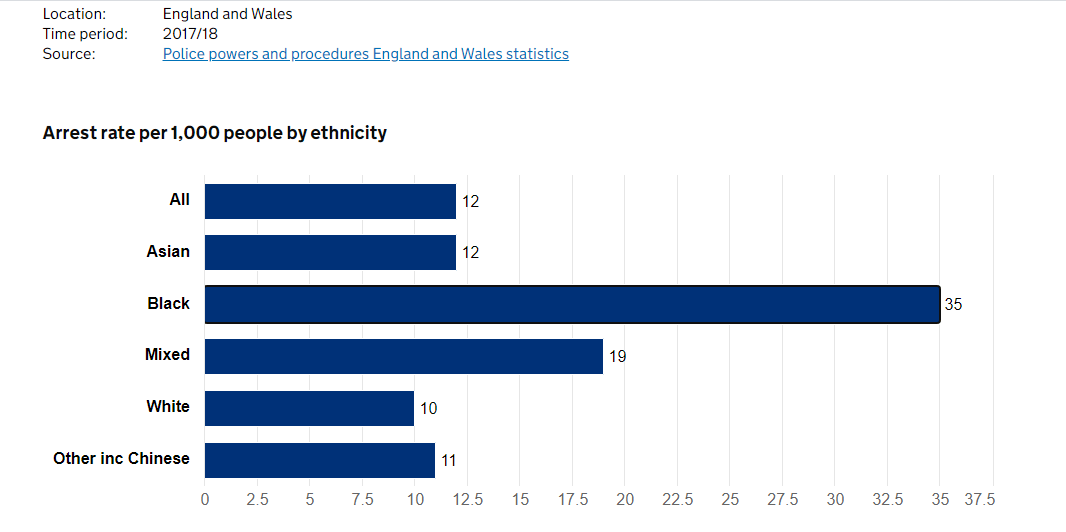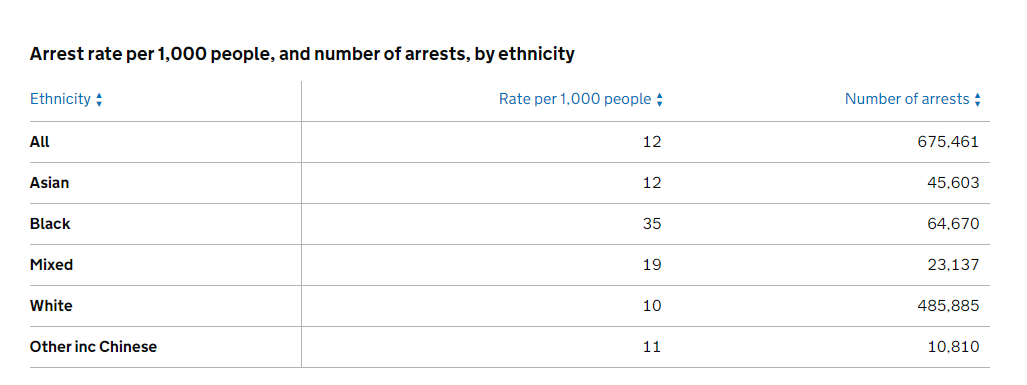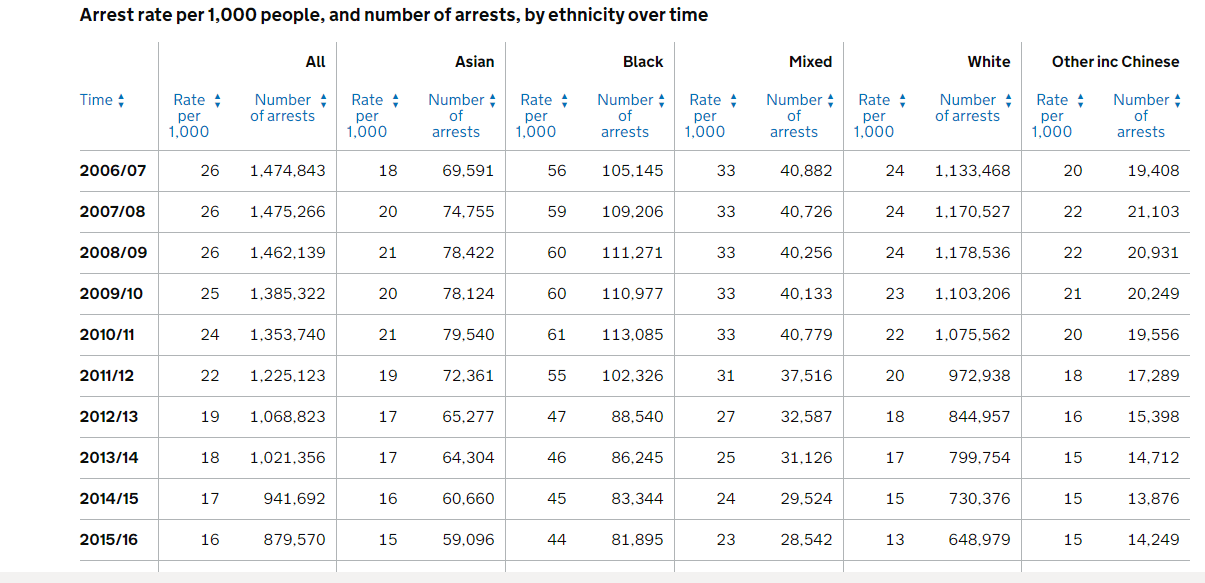In the UK, Black people are 3 times likely to be arrested. Decades of data show’s UK has an alarming stat
In the UK there were 675,461 arrests in 2017/18, a fall of 9% on the previous year. The UK crime stats indicate Black people were over 3 times as likely to be arrested as White people. There were 35 arrests for every 1,000 Black people, and 10 arrests for every 1,000 white people.
Overall, men were 6 times as likely to be arrested as women. There were 22 arrests for every 1,000 men, and 4 arrests for every 1,000 women. Black women were more than twice as likely to be arrested as White women resulting in 7 arrests for every 1,000 Black women, and 3 arrests for every 1,000 White women.
Arrest by ethnicity



A person arrested for a notifiable offence is counted for each occasion on which they are arrested, provided that the offence is not connected or related to an offence for which the person has already been subject to arrest during the year.
If it is connected, or if a person has been arrested for more than one notifiable offences on the same occasion, the offence with the highest maximum penalty is recorded.
Arresting officers are required to record details of an arrest at the time of arrest, or as soon as possible after. A universal code of practice (PACE code G) ensures arrests are standardised across forces, both in terms of the processes involved, and the data recorded.
The person arrested states their ethnicity at the time of arrest.
Police forces have their own internal auditing methods to ensure that data is accurate and up to date before it’s submitted to the Home Office.
Rounding
Rates of arrest per 1,000 people are rounded to the nearest whole number.
Police forces’ recording of arrests, and use of the data, are monitored by HM Inspectorate of Constabulary and Fire & Rescue Services (HMICFRS).
HMICFRS carries out regular inspections and produce reports on the inspections. Home Office statisticians undertake quality assurance checks which include looking for missing and incomplete data, inconsistencies in the data, and extreme values.
Trend analyses also look for unusual or unexpected trends in the data. Any inconsistencies or unusual trends are flagged with forces, who are requested to either explain the trends, or resubmit to amend the data.
All data is then confirmed by forces during a data reconciliation before the figures are published.









